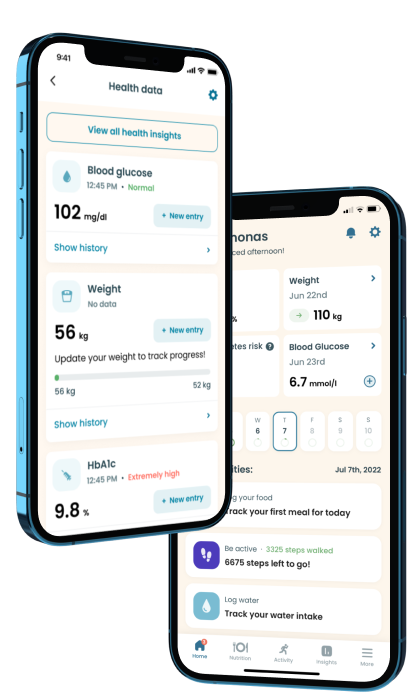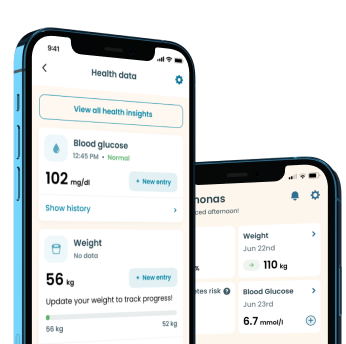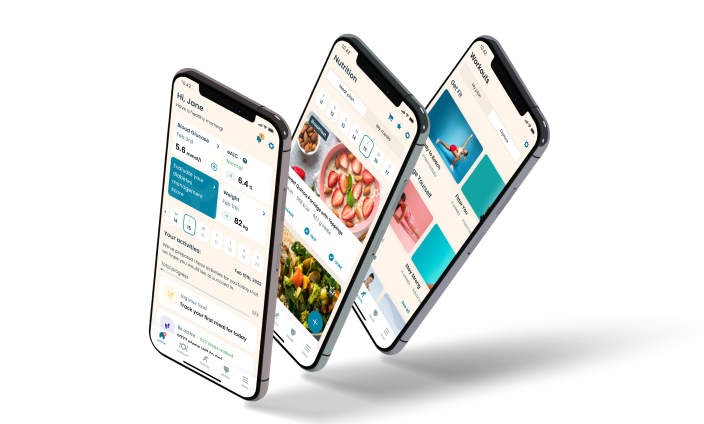Shrimps and Diabetes

It's ok
0
106 kcal
If you are somebody who suffers from diabetes, and diabetes type 2 in particular, you will know that this health condition is far more involved than simply dealing with blood sugar issues. Type 2 diabetes can lead, in the very worst cases, to things like heart disease which can put patients at serious risk of premature death. When thinking about the ways in which type 2 diabetes sufferers can fight against these outcomes and improve their health, one of the main areas to concentrate on is without a doubt diet.
By being conscious of what you eat and the consumption of nutritious meals with healthy, beneficial ingredients, one's body can start to change in the form of effective weight loss. To keep the body as healthy as possible, a good, balanced diet is the best place to start and the most effective tool in the management of diabetes. The more weight an obese or overweight person loses, the better able they are to stabilize blood sugar levels.
Living the life of a diabetic person means that there is a lot to consider when it comes to what you should eat and what you should avoid. Low sugar foods are, of course, the first things on the menu, and rounding out your eating habits with lots of overall healthy foods is a simple way to improve all of your symptoms and start living a much healthier life free from the threat of heart disease.
So, now that you know what direction your diet should be going in, it is time to figure out which specific foods are perfect for adding to your routine! In this particular article, we are going to be espousing the health benefits of a type of shellfish that is popular and beloved in pretty much every corner of the globe, prawns/shrimp!
Prawns are an easy and healthy thing to add to your diet, and eating prawns has so many great health benefits for diabetic patients and non-diabetic patients alike, u+nless you have allergic reactions to shellfish - which is a separate digestive issue to diabetes. Without further ado, here is a guide on the relationship between eating shrimp and diabetes, and how they can help to improve your diabetic health.
Nutritional value
- Protein 20.35 g
- Carbohydrate 0.88 g
- Fat 1.77 g
- Fiber 0 g
- Sugar 0 g
- Cholesterol 150 g
Nutrition Value Of Shrimp
First of all, let's take at the simple nutritional value of a standard portion of plain cooked shrimp (boiled, broiled or grilled without any additional ingredients).
-
Protein - 20.35 g
-
Carbohydrate - 0.88 g
-
Fat- 1.77 g
-
Fiber - 0 g
-
Sugar - 0 g
-
Cholesterol - 150 g
As you can see, the shrimp is an extremely healthy shellfish. High in protein, low in fat, not contributing negatively to your dietary cholesterol, even nearly zero carbohydrates, and most importantly, incredibly low in sugar. Diabetic diets should be all about reducing sugar intake and focusing on maintaining health by avoiding things like saturated fats and extra carbs.
Shrimp also has a zero value on the glycemic index so when you are watching your glycemic load, eating shrimps is going to definitely be favorable.
Take a quiz
Discover what Klinio app can do for you
Healthy diabetes meal plan crafted just for YOU

Personalized workouts with no equipment needed

Track your progress with smart tracking tools

Can Diabetics Eat Shrimp Safely?
The simple answer to this question, as we are sure you have already gathered, is yes! Eating shrimp is a great thing for people with diabetes because it has all the nutritional value for managing diabetic health in the best ways possible. Most importantly, the food does absolutely nothing to mess with your blood sugar levels and has zero effect on insulin resistance.
With even nearly zero carbohydrates, prawns are still highly nutritious and this makes it an easy ingredient to fulfill your dietary needs.
Don't be fooled by the fact that the nutritional value of shrimp and some other healthy shellfish appear to have a higher fat content. Compared to junk foods that have high fat content, the fats found in fatty fish and seafood are good fats! They are omega 3 fatty acids that are vital in helping to maintain things like good cholesterol, and they also have great anti-inflammatory properties which in turn will help to reduce your risk of conditions like heart disease.
Should I worry about mercury contamination?
You may have read or heard about shellfish and some other fish being unsafe to eat because they contain mercury. All seafood contains some mercury, In most cases, it is merely traces with minimal harmful effects for people with no dietary restrictions and people with diabetes.
There is a low risk of mercury contamination and the FDA and EPA advise it is completely safe for most people to enjoy fish and seafood items regularly in their diet as long as you limit fish to 12 ounces per week. The warnings you may have heard apply to women who may become pregnant, pregnant women, nursing mothers, and young children.
How Should People with diabetes Eat Shrimp?
Of course, even the healthiest foods in the world can be turned into unhealthy choices if they are prepared and cooked in unrecommended ways. In order to keep one's body healthy and make sure that your prepare shrimp in a fashion that is going to help your overall health rather than put you at increased risk, there are a few rules that need to be followed and methods that need to be avoided.
Here are a few pointers for how to get the best out of your shrimp, all approved by governing bodies such as the American Diabetes Association:
-
As much as you can, stick to eating fresh prawns that have not been through processes such as canning. When most fish and seafood items are canned, they come into contact with a lot of external elements such as preservatives and other chemicals, and over time, this can severely reduce the quality of the food and strip it of some of its nutritional value. This, in turn, will mean that it is not meeting your nutritional needs.
-
Don't deep fry your fish, or bread/crumb it in an unhelathy way. Breaded and fried fish, has vastly increased levels of both fat and cholesterol, and eating it when prepared this way almost eliminates any of the health benefits that you would have otherwise gained from the omega 3 fatty acids. This no deep fry, no breading rule applies to pretty much any type of fish that you can think of, from fresh trout to flaked fish to alltypes of shellfish from oysters to prawns.
To be as healthy as possible, cooked fish needs to be prepared in such a way that the omega 3 fatty acids can best shine, and so that no cooking methods can interfere with your blood glucose levels. If you really want a classic shrimp cocktail, then you can always make smart choices like choosing a cocktail sauce that is low in saturated fat. For fattier fish, you shouldn't need to do too much extra to inject more flavour.
Although eathing shrimp is a healthy choice in itself, you can do even better when you eat it alongside things like vegetables that are super rich in vitamins, minerals, fiber and other nutrients. All of these elements will help to increase your total nutrient intake.
Vegetables are a rich source of everything that you need in order to keep your body ticking over in a healthy way, and pairing them with seafood items is a simple way to create a lunch or dinner meal that is deemed good for diabetes and blood glucose levels in particular.
What Are The Wider Health Benefits Of Eating Shrimp?
So, we know that eating shrimp is great for your blood sugar and can reduce things like cardiovascular disease, making it ideal for a diabetes diet, but what are the other kinds of health benefits that you can stand to receive when you eat shrimp on a regular basis?
-
We have already spoken a lot about the wonders ofthe omega 3 fatty acids that prawns contain hwne it comes to cardiovascular disease and heart health, but something you might not know is that omega 3 fatty acids are also brilliant in helping to boost your body's immune system.
-
In shrimp and some other fatty fish, there is also the presence of an antioxidant called astaxanthin, and this is another element in helping with higher risk of heart attacks and bad cholesterol. It does this by helping to promote and establish good general function of your arteries, and when your arteries are clear and happy, the human body is able to work as it is supposed to whether applicable to diabetic situations or not.
You may have also heard the word 'antioxidant' and another great side effect of including lots of shrimp and other shellfish food in your diet is that it can result in clearer, more blemish free skin. Antioxidants also fight what are called free radicals which are unstable atoms that can damage cells, causing illness and aging and are linked to a host of diseases.
-
You may also have heard fish and shellfish being called "brain food". This benefit isn't just applicable to people with diabetes but to everyone. The omega 3 that has been mentioned extensively in this article are a key factor in the manufacture, growth and maintenance of brain cells.
The Takeaway for People with Diabetes
It is clear to see from our exploration of the topic that shrimp/prawns, other shellfish and seafood, and fish are safe foods for people with diabetes because
-
It is low on the glycemic index
-
It is highly nutritious with minimal risks of harmful effects
-
It will not cause blood sugar spikes
-
It is heart-healthy and will not increase cholesterol
Something extremely important to remember, however, is that a lot of the benefits of food like shellfish depends on the way that you choose to cook it. Cooked fish that has been prepared by broiling, grilling or steaming is ideal, whereas fried and breaded versions are not recommended for a diabetes diet.
You should be looking to limit fish in your diet that is battered, fried and breaded, because it reduces the positive effects of the omega 3 fatty acids and also will not help with managing your blood sugar levels Bake fish, don't fry it!
If you or a family member of yours is having problems with blood glucose levels and other symptoms of diabetes, then it is always advised to make an appointment with your doctor to have the relevant tests done. Undiagnosed and untreated diabetes is extremely common across the country, and the first step to becoming more heart healthy and and in control of your blood sugar levels is making sure that you have the correct professional diagnosis.
* Author's note - For the purpose of this article, the word prawn and shrimp are used interchangeably. In North America, what is referred to commonly as shrimp are known as prawns in Europe and Asia. Other than different species and breed names, the products are the same thing in essence.

Download Klinio app!
Get more by downloading our free Klinio App. Analyze your health, form new habits and manage your diabetes anytime, anywhere.
OR
SCAN QR CODE



GET THE APP










